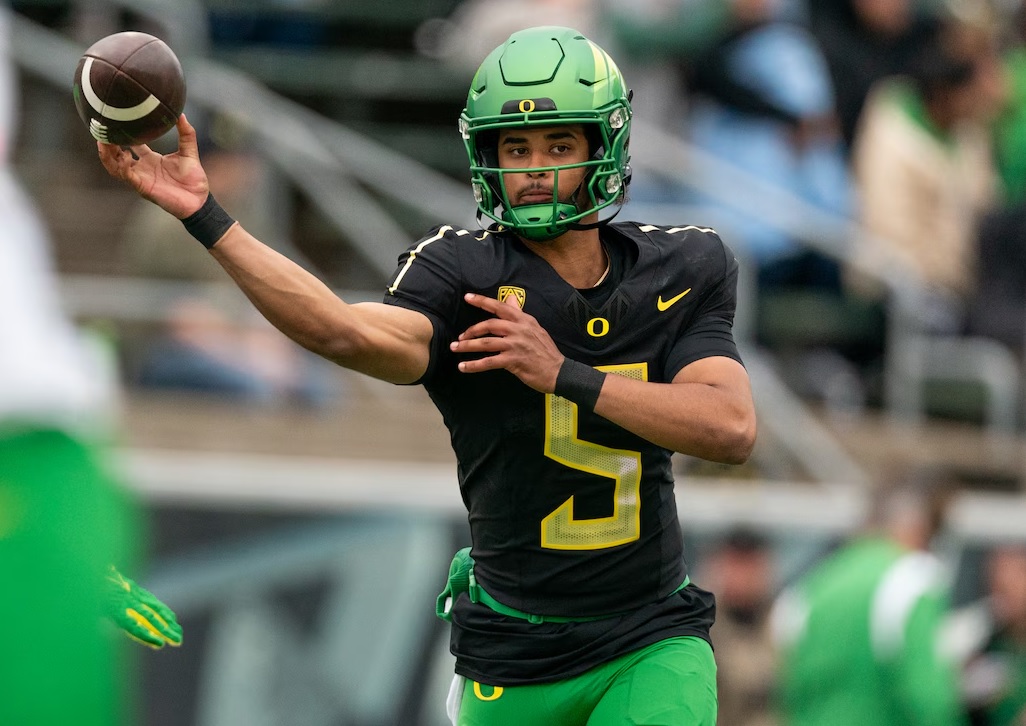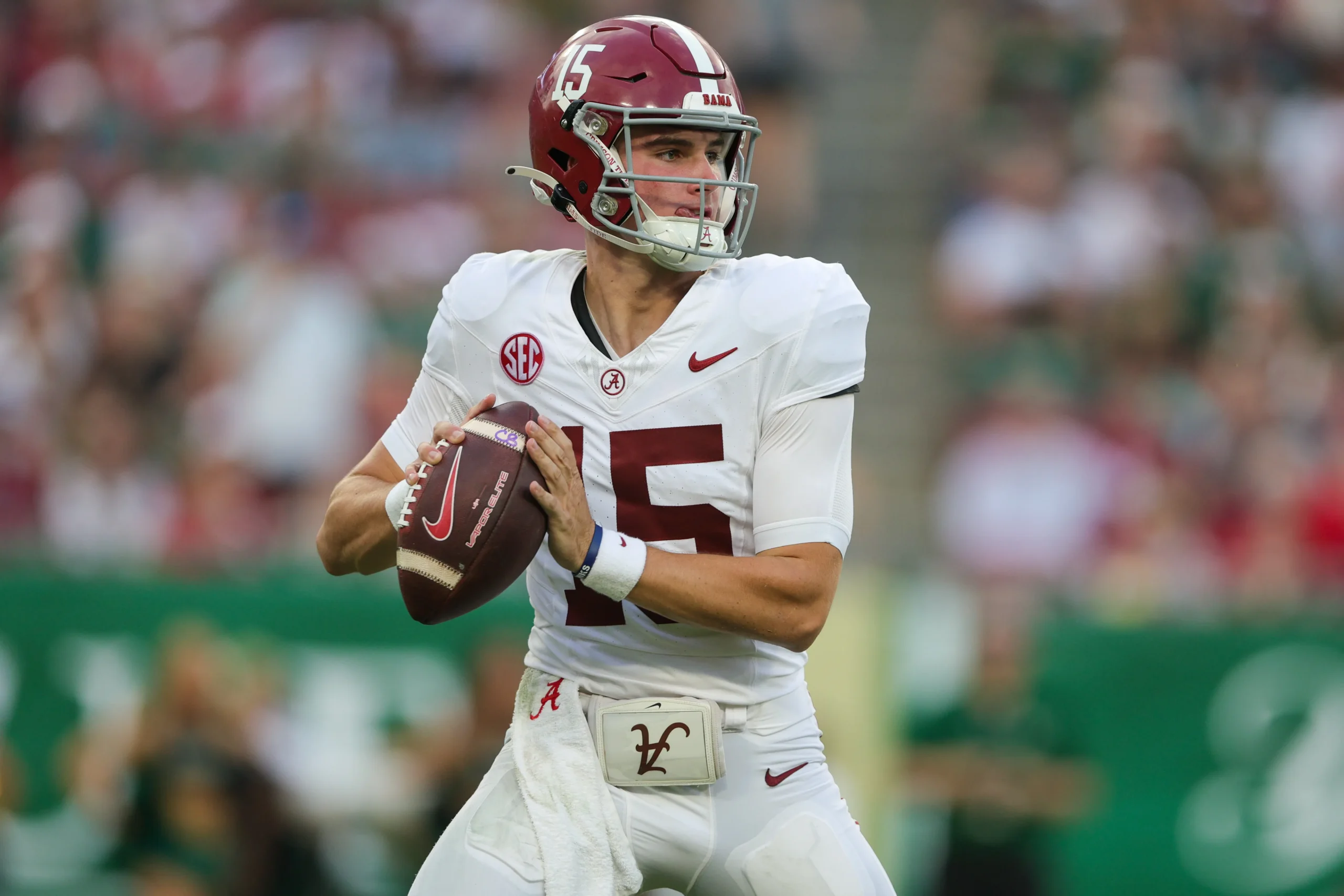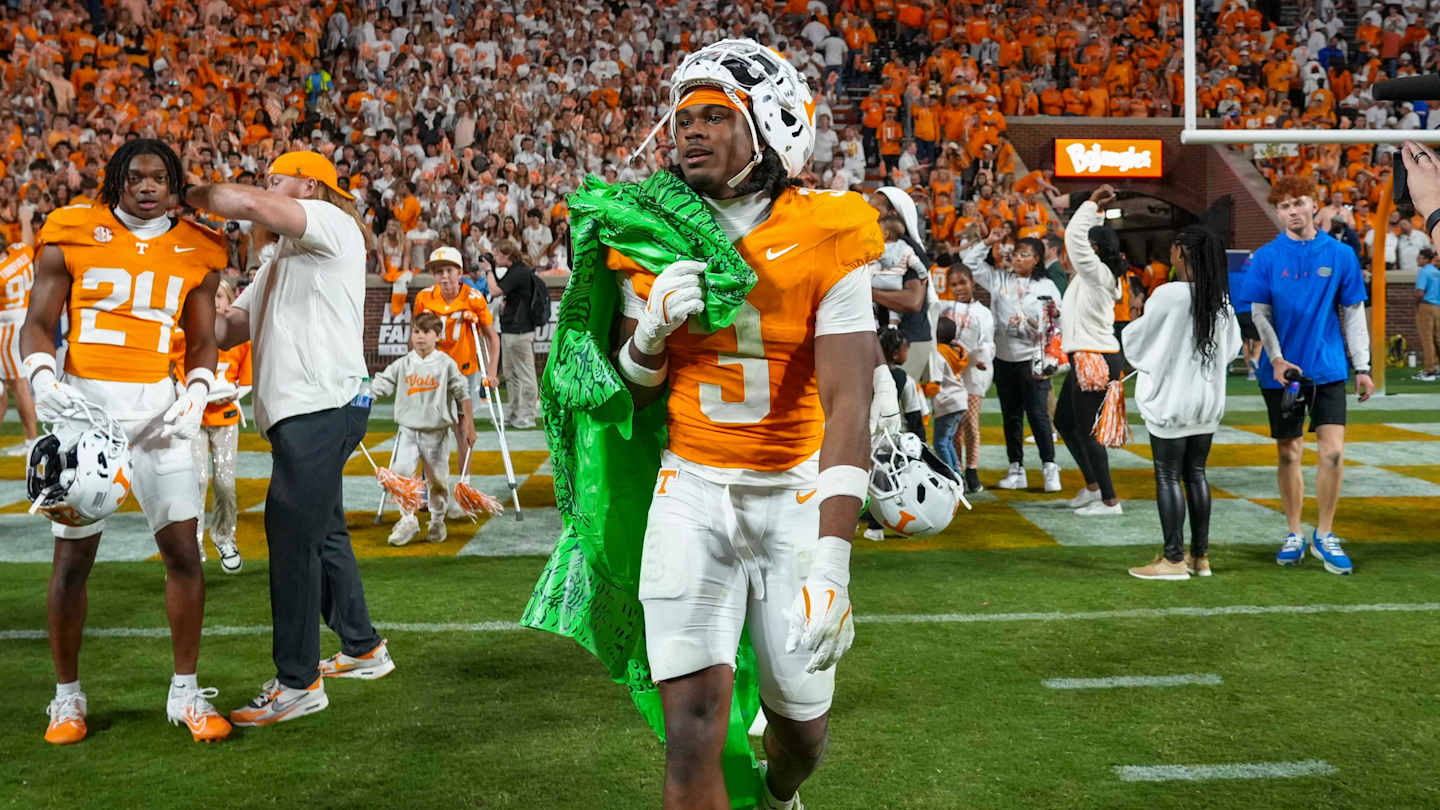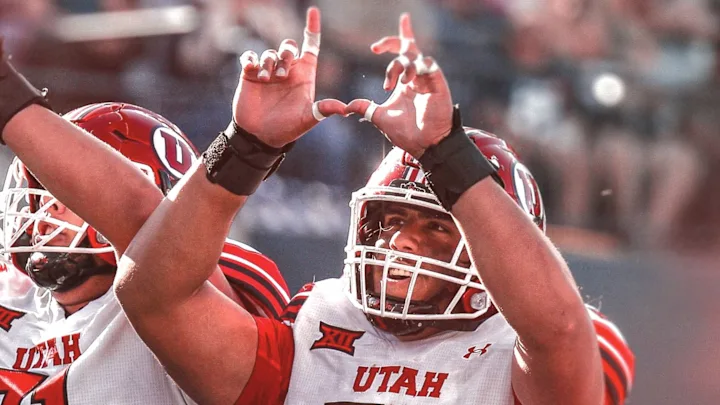By Charlie Campbell.
Send Charlie an e-mail here: [email protected]
Follow Charlie on Twitter @draftcampbell for updates.
This page was last updated March 15, 2019. Follow me @walterfootball for updates.
Defensive Tackle Class
Early-round talent: A+
Mid-round: B+
Late-round: B+
Overall grade: A-
Merging the 2019 and 2018 prospects
Quinnen Williams
Ed Oliver
Christian Wilkins
Vita Vea
Da’Ron Payne
Taven Bryan
Jeff Simmons
Dre’Mont Jones
Dexter Lawrence
Jerry Tillery
Gerald Willis
P.J. Hall
B.J. Hill
Derrick Nnadi
Justin Jones
Deadrin Senat
This is an excellent year for NFL teams to target interior defensive line talent. If it weren’t for an injury to Jeffery Simmons and off-the-field issues with Jerry Tillery, this draft class could have produced seven first-round defensive tackles. On top of having an abundance of early-round talent, there are also some special prospects who come along only once or twice a decade. Last year was a good class of defensive tackles, but this year is even better.
If you were to merge the two classes, Quinnen Williams would be the top prospect by a long shot. Ed Oliver and Christian Wilkins are different types of players, but they are on a par with Vea and Payne. If Jeffery Simmons weren’t injured, he would be the second-best tackle behind only Williams. However with the injury, Simmons is probably a hair behind Taven Bryan. Dre’Mont Jones and Dexter Lawrence are probably late first-round or early second-round picks. Jerry Tillery and Gerald Willis are second-rounders comparable to P.J. Hall.
Safest Pick: Christian Wilkins, Clemson

Previous Picks:
2018: Vita Vea
2017: Jonathan Allen
2016: Jarran Reed
2015: Leonard Williams
2014: Louis Nix
2013: Star Lotulelei
Looking at the past years, I was way off on Nix, but the rest all of turned into solid pros. Lotulelei is a moderate disappointment as a top-16 pick, but he is a serviceable NFL player. Williams quickly became a Pro Bowler for the Jets and is one of the top young defensive linemen in the NFL. Reed broke out last season for the Seahawks, while Allen was excellent as a rookie and second-year pro. Vea played well at times as a rookie while also dealing with injuries. It is far too early to pass any judgement on him.
Even though I think Quinnen Williams is the best player in the 2019 NFL Draft, I believe Wilkins is the safest pick. Williams is a 1-year wonder, while Wilkins was a good player over the past three seasons and helped Clemson win two National Championships. Wilkins is a balanced player who contributes well as a pass-rusher and run defender. He also is very versatile, having the ability play a variety of techniques. I could see Wilkins quickly becoming a quality starter in the NFL.
Biggest Bust Potential: Jerry Tillery, Notre Dame

Previous Picks:
2018: Maurice Hurst
2017: Malik McDowell
2016: Robert Nkemdiche
2015: Mario Edwards Jr.
2014: Anthony Johnson
2013: Jesse Williams
Reviewing the past, I have a pretty good track record here. McDowell’s career may be over before it started because of an ATV accident. Nkemdiche has been a bust through three seasons with the Cardinals. Edwards was a bust for Oakland. I was right about Anthony Johnson and Jesse Williams, although both fell in their drafts and weren’t the early-round prospects some in the media made them out to be. The exception to being correct with this group could be Hurst, who played pretty well as a rookie.
Of the early-round prospects for the 2019 NFL Draft, I think there is the most risk with Tillery. He was inconsistent on the field and would disappear at times. Tillery has a good skill set, but didn’t always play up to it. On top of that, teams have red flagged his draft report with serious character concerns. Every source with a handful of teams who went through Notre Dame heard about significant character issues with Tillery. It is so well known that even during TV broadcasts, there were mentions of Tillery being a bad teammate and that he was trying to change that. Team sources say not only are they concerned about Tillery in the locker room, they also are worried about him failing tests and getting suspensions in the NFL. With his inconsistent play on the field and the issues off the field, I think Tillery has the most bust potential.
Defensive Tackles Rankings by Attributes
Pass Rush:
NFL prototype: J.J. Watt, Texans
- Quinnen Williams
- Ed Oliver
- Dre’Mont Jones
- Christian Wilkins
- Jeffery Simmons
- Jerry Tillery
- Gerald Willis
- Dexter Lawrence
Recap: The NFL is always searching for interior linemen who can get after the quarterback. They are a hard commodity to find, and one can make a massive impact on a team’s ability to rush the passer. Defensive tackles who can rush the quarterback set up a lot of sacks for edge rushers via disruption and double-teams. The fastest way to get to a quarterback is from up the middle, and even just forcing quarterbacks to get off their drop spot hurts the passing game. Pass rush up the middle is more disruptive for quarterbacks than edge rushing.
In the pass rush, Williams is the best. He could be one of those rare NFL defensive tackles who is capable of generating multiple seasons of double-digit sacks. Williams is extremely fast off the snap, possessing the ability to fire his gap and close on the quarterback in a hurry. Williams can use pure speed to fly by blockers and win with a speed rush. He also has functional strength to bull rush through blockers, or grab them and toss them aside. On top of his great skill set, Williams shows impressive technique with his hand placement and has variety in pass-rushing moves with speed rushes, bull rushes, swim moves, and more.
Oliver is an impactful interior pass-rusher with rare ability to harass the quarterback from the inside. Oliver’s pass-rush potential is very hard to find, and that should make him a beloved prospect across the scouting community. He is extremely fast at the point of attack. He explodes out of his stance and immediately gets penetration into the backfield. On top of his speed and tremendous pad level, Oliver has active hands to slap away blockers hands.
Jones showed his pass-rush ability with 8.5 sacks in 2018. He is very fast off the snap with special athleticism. He really improved as a junior and showed the ability to to consistently get off blocks. Jones could be a fast three-technique tackle who produces quality sack numbers for the position during his NFL career.
In the pass rush, Wilkins is dangerous. He is a quick defender at the point of attack with the ability to fire his gap. He uses his strength to push through blocks and can close in an instant on the quarterback. Wilkins has a burst to fire by guards into the backfield and the strength to bull rush through linemen. He uses his hands well and shows some variety in pass-rushing moves to get after the quarterback. Wilkins displayed excellent versatility during college in terms of rush production from a variety of positions and techniques. While he played a lot of defensive end in 2016, Wilkins really doesn’t have edge-rusher speed for the NFL. He will have to rush from the inside as a pro, but that is his natural position anyway and he presents a speed mismatch when rushing against guards.
Simmons is a quick and athletic interior rusher. He had two sacks in his final season, but also created a lot more pressure than the numbers indicate, plus he notched five sacks the previous season. Simmons is able to use his speed to fire by guards and has the strength to fight through blocks. He has the potential to be a quality pro rusher.
In the pass rush, Tillery is solid, but not outstanding. He has decent first-step quickness that he uses to get into the chest of the offensive linemen. On Tillery’s best pass rushes, he uses active hands to shed blocks. When Tillery gets tangled up or doesn’t continue to use his hands, he can get tied up. Tillery has some strength to him with the ability to shed blocks and bull rush into the pocket. When he’s playing well, Tillery is a physical defender who has some nastiness to him.
Willis showed pass-rush potential as a senior with four sacks. He used speed to dart by guards and was scrappy to fight off blocks. In the NFL, Willis could have issues with length on the inside.
Lawrence has enough pass-rushing talent to contribute. His seven-sack season as a freshman is not to be expected as the norm, but he has the ability push the pocket. Lawrence has tremendous power to bull rush through guards and harass the quarterback. While Lawrence may not pick up a lot of sacks as a pro, he has the talent to get the quarterback to move off his landmark.
Run Defense:
NFL prototype: J.J. Watt, Texans
- Dexter Lawrence
- Quinnen Williams
- Christian Wilkins
- Jeffery Simmons
- Jerry Tillery
- Gerald Willis
- Ed Oliver
- Dre’Mont Jones
Recap: Lawrence is an asset in the ground game. He is tough to move at the point of attack and has a strong anchor. Lawrence holds his ground well, and offensive linemen really struggle to get any kind of push on him. His lateral anchor is good as well. Lawrence uses his strength to shed blocks and start tackles on backs on runs up the middle. He also has the speed and athleticism to flow to the ball and get in on tackles outside of his gap. However, he gets into trouble if he stand up too high. Maintaining leverage and his conditioning will be points of emphasis for Lawrence during his pro career. Still, he should end up being a very good run defender in the NFL.
In the ground game, Williams is a quality defender. He holds his ground well with a good lateral anchor that also shows he can absorb double teams. Williams is able to hold his gap and not get pushed back on runs coming straight at him. With his strength and quickness, Williams also tosses blockers aside to cause tackles for a loss. Williams is a well-balanced player with his ability to defend the run and rush the passer.
Wilkins is a solid run defender as well. He has a strong, thick lower body to hold his ground at the point of attack. He fills his gap and can be tough to move at the line of scrimmage. Wilkins is able to eat up his block and prevent holes from opening up. He can shed his block to stuff a run near the line of scrimmage or fire into the backfield to disrupt a run off the snap. Wilkins also will give an effort to make tackles in the ground game downfield. He has a quality motor and doesn’t put forth a poor effort.
Simmons was a tough run defender for Mississippi State. He is strong at the point of attack with his hands to shed blocks and hold his ground with runs coming at him. Simmons’ quickness and strength allow him to get off blocks and make tackles outside of his gap.
In the ground game, Tillery is a big body who is generally sound to hold his gap and stand his ground. Tillery had good size and strength to not get pushed around. He also can shed blocks and make tackles outside of his gap.
The bottom trio of Willis, Oliver, and Jones are all undersized defenders for the NFL who could have issues in run defense. Willis was the strongest of the three and is better at holding his ground. He still has room for improvement as a pro.
Oliver plays hard as a run defender. He is at his best when he is firing into the backfield to blow up runs behind the line of scrimmage. His career tackles for a loss total is no fluke. The problems that Oliver has in the ground game is being undersized and holding up against downhill runs coming straight at him. He does not have a strong lateral anchor and can get covered up in the ground game. Oliver’s lateral anchor is going to be problematic in the NFL, and he should not be played as a nose tackle at the next level. Double teams also can give him problems.
Jones could have issues as a run defender in the NFL. The 6-foot-2, 281-pounder is going to have to hold up against much bigger guards who are larger, stronger, and longer. Jones showed improvement as a run defender in his final season at Ohio State, but needs to get better at holding his ground against runs coming downhill straight at him.
Speed:
NFL prototype: Aaron Donald, Rams
- Ed Oliver
- Quinnen Williams
- Dre’Mont Jones
- Jeffery Simmons
- Christian Wilkins
- Gerald Willis
- Jerry Tillery
- Dexter Lawrence
Recap: This top trio is made up of very fast defenders. Oliver is the fastest with his rare first-step get-off and ability to fire into the backfield. Williams could be just a little slower than Oliver, but considering Williams is much bigger, one can see why he is so highly rated. There is no doubt that Williams is very fast at the point of attack. Jones is very fast as well, possessing the ability to fire his gap and create disruption behind the line of scrimmage.
Simmons and Wilkins are also quick defenders at the point of attack. Each has uncommon quickness for his size alongside a surprising combination athleticism and speed. Both players should be able to win with speed rushes in the NFL.
Willis showed some quickness in 2018. Tillery and Lawrence have quickness in their big bodies as well. None of these tackles would be in the slow, lumbering category.
Three-Technique:
NFL prototype: Aaron Donald, Rams
- Ed Oliver
- Quinnen Williams
- Dre’Mont Jones
- Christian Wilkins
- Gerald Willis
- Jeffery Simmons
- Jerry Tillery
- Dexter Lawrence
Recap: Good three-techniques are generally hard to find, but this draft class has a few of them. The first three above have all shown the ability to serve as skilled three-techniques. Oliver’s speed, pass-rush ability and get-off make him the most natural three-technique in this draft class. He would be a fit in a Tampa 2.
Williams and Jones are just a little below Oliver. Williams played some nose tackle for Alabama, but he would be a great fit as a three-technique in the NFL given how fast he is at the point of attack and his functional strength to get off blocks. Jones is also fast like them, and being a three-technique is the position he fits in the NFL.
Wilkins has flashed the ability to play as a three-technique with enough quickness and athleticism to fire into the gap off the guard’s outside shoulder. Willis was disruptive as a three-technique for Miami in 2018. Simmons also has the ability to be a three-technique in the NFL, and he offers some length and strength to help him defeat blocks.
Tillery can play some three-technique as he has enough speed, but he would probably be better off rotating into that role. In the NFL, he may not cause as much disruption against quicker and more athletic guards.
Lawrence doesn’t fit as a three-technique; he is a heavy nose tackle.
3-4 Defensive End:
NFL prototype: J.J. Watt, Texans
- Jeffery Simmons
- Jerry Tillery
- Christian Wilkins
- Dexter Lawrence
- Quinnen Williams
- Dre’Mont Jones
- Gerald Willis
- Ed Oliver
Recap: This group has a few 3-4 defensive ends. Simmons would be a good fit to play a five-technique role. He has enough length and strength to set the edge, plus the speed to add to the pass rush going against tackles or guards. Simmons could be a nasty 3-4 defensive end.
Tillery could be a nice fit as a five-technique. He has the length, strength, and body type to be a good fit for the position.
Wilkins is very versatile and played a variety of techniques at Clemson. He has good quickness, athleticism, and strength to be a five-technique, possessing just enough length. Some sources with 3-4 teams think Wilkins could be a good five-technique in the NFL.
Lawrence could be a power five-technique. To go along with his strength and explosiveness, he has good length and is athletic. He could be a great fit in a 3-4 defense to flip between nose tackle and five-technique to exploit weak links on the opposing offensive line.
Williams has enough length and athleticism that he could play some five-technique. He is strong enough to hold up in that role, but he would probably be better suited playing on the inside of a 4-3 defense.
Jones may have enough length to play some five-technique, but his weight and strength could be problematic for setting the edge. Willis and Oliver are too undersized to play five-technique in the NFL.
3-4 Nose Tackle:
NFL prototype: D.J. Reader, Texans
- Dexter Lawrence
- Jerry Tillery
- Christian Wilkins
- Quinnen Williams
- Jeffery Simmons
- Gerald Willis
- Dre’Mont Jones
- Ed Oliver
Recap: A good nose tackle for a 3-4 defense is a tough commodity to find. Someone like Vince Wilfork or Casey Hampton in their prime sets the tone for the pass rush and the run defense by blasting the center into the backfield. An effective zero-technique stuffs the run and occupies interior blockers to open up lanes for blitzes up the middle.
The 2019 NFL Draft has a natural nose tackle prospect in Lawrence. He is just about the prototypical nose tackle with his size, power, quickness, explosiveness and athleticism.
Tillery has the skill set to fit as a zero-technique with his size and strength. Wilkins is very versatile and possesses enough strength and weight to play zero-technique. Williams played some nose tackle for Alabama and was phenomenal at tossing blockers to the side to get into the backfield. Simmons is capable of playing some zero-technique, but that isn’t an ideal fit for him.
The rest of this group doesn’t fit as well. A team could play Willis at 3-4 nose tackle, but he could have a hard time holding up there. Jones and Oliver don’t have the weight or strength to play nose tackle in a 3-4.
NFL Picks - Dec. 22
NFL Power Rankings - Dec. 17
2026 NFL Mock Draft - Dec. 17
Fantasy Football Rankings - Sept. 1




